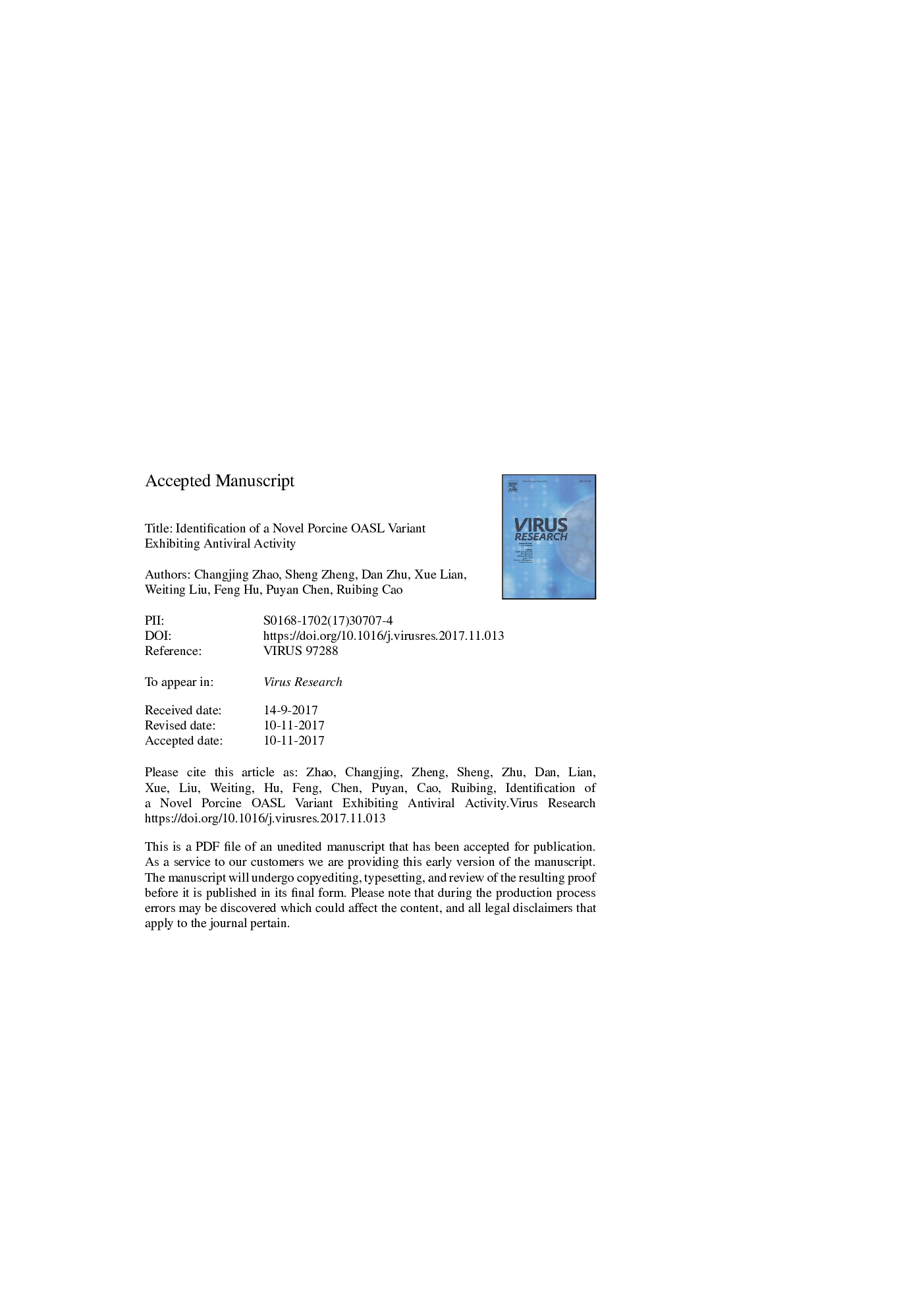| Article ID | Journal | Published Year | Pages | File Type |
|---|---|---|---|---|
| 8752015 | Virus Research | 2018 | 22 Pages |
Abstract
2â², 5â²-Oligoadenylate synthetase-lilke (OASL) protein is an atypical oligoadenylate synthetase (OAS) family member, which possesses antiviral activity but lacks 2â², 5â²-oligoadenylate synthetase activity. Here, a novel variant of porcine OASL (pOASL2) was identified through RT-PCR amplification. This gene is distinguishable from the previously described wild-type porcine OASL (pOASL1). The gene appears to be derived from a truncation of exon 4 plus 8 nucleotides of exon 5 with a premature termination, measuring only 633 bp in length, although its position corresponds to that of pOASL1. Given this novel gene appears to be a variant of pOASL, we assayed for antiviral activity of the protein. We demonstrated that pOASL2 could inhibit Japanese encephalitis virus (JEV) proliferation as well as pOASL1 in a transient overexpression assay of pOASL1 and pOASL2 in PK-15 and Vero cells. In addition to JEV, pOASL1 and pOASL2 also decreased the proliferations of Porcine reproductive and respiratory syndrome virus (PRRSV) and vesicular stomatitis virus (VSV), but did not exhibit antiviral activity against pseudorabies virus (PRV). Structural analysis showed that the pOASL2 gene retained only the first three exons at the 5â²-. To investigate the role of the αN4 helix in pOASL in antiviral responses like that in hOASL, we mutated key residues in the anchor domain of the αN4 helix in pOASL2, based on the domain's location in hOASL. However, the antiviral activity of pOASL2 was not affected. Thus, the αN4 helix of pOASL likely does not play a significant role in its antiviral activity. In conclusion, pOASL2 acts as a new splice isoform of pOASL that plays a role in resistance to infection of several kinds of RNA viruses.
Keywords
PRVcaspase activation and recruitment domainsRibonuclease LIFN regulatory factor 3RNase LOASLCARDSIRF-3MDA5CSFVRIG-IVSVPRRsPRRSVOLDPBMCsIFNsISGsinterferonsAlternative splicingJEVUbiquitin-like domainperipheral blood mononuclear cellsAntiviral activityOASPseudorabies virusVesicular stomatitis virusJapanese encephalitis virusPorcine reproductive and respiratory syndrome virusClassical swine fever virusmelanoma differentiation-associated gene 5retinoic acid-inducible gene IIFN-stimulated genesPorcinepattern-recognition receptors
Related Topics
Life Sciences
Immunology and Microbiology
Virology
Authors
Changjing Zhao, Sheng Zheng, Dan Zhu, Xue Lian, Weiting Liu, Feng Hu, Puyan Chen, Ruibing Cao,
